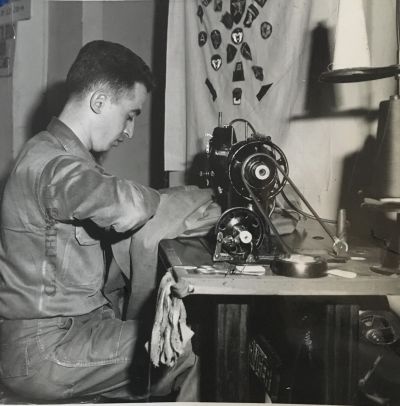L’autrice descrive la bellezza della sartoria italiana. Lei scrive che “la sprezzatura”, è un modo di cucire fatto con meno sforzo, è un’arte approfondita solo dai sarti migliori. Lei spiega la formazione di un vestito e come i sarti cominciano e finiscono il processo. La sartoria italiana iniziò in 1351 in italia. Piano piano, altri cominciarono a fare vestiti come facevano i sarti italiani. Il vestito andò cambiando negli anni per essere come conosciamo il vestito oggi. I nonni e gli zii della scrittrice furono sarti molto bravi nel sud d’italia. In 1930, suo nonno, un sarto esperto, aprì una bottega nel sud italia che ancora oggi è famosa.
The history of tailoring in the bespoke tradition in Italy speaks to a true celebration of Italian culture and craftsmanship, of Italy’s rich heritage and sartorial expertise, of perfection in clothing, of “sprezzatura” that alludes to a cool nonchalance that your look appears to be without effort or thought.
The British word “bespoke” (spoken for) signifies custom garments designed for one individual client requiring a master tailor to create a unique pattern, unlike made-to-measure garments where an existing pattern is simply altered to fit. The made-to-measure is much less labor intensive and less costly to produce and purchase. Bespoke tailors are the most respected people in the garment industry. Choice of fabric, color and style of suit is suggested by the tailor but decided by the client. It is the pinnacle of customization based on body measurements: circumference of chest, waist, back, seat, and length of legs and arms, position of armholes, posture, and slope of spine.
The master tailor’s pattern begins on brown paper with a vertical line of the jacket’s back seam, curved to fit the back from neck to seat. The first fitting is of a basted suit, adjustments are marked, and the suit is taken apart and readjusted. After a second, sometimes last fitting, final adjustments are made, and the lining and buttonholes are hand-sewn. A final pressing from vintage irons filled with spring water completes the garment. It may take 45 or more tailors 25 hours to complete one suit considering it takes one hour to sew each pocket and 15 minutes per buttonhole.
Italy’s tailoring roots began in 1351 with the establishment of the Tailors Association. Garments in the early Middle Ages were nothing more than loose, shapeless robes until the human form was exalted in the arts during the Renaissance. Fabrics were cut, gathered and sewn to reflect status and taste.
Post-Renaissance tailoring involved designing, fitting, fabricating, and finishing garments. It became a legitimate occupation first in England, then France and Italy. Historically it has been taught through a two-year apprenticeship following two years of schooling. The hierarchy is master tailor, cutter, journeyman tailor (sews the padding and linings), and apprentice who runs the errands and cleans the shop before learning the basics of sewing.
By the early 1900s, one of the most famous Italian tailors, Angelo Blasi, emulated the structured style of English tailoring while his contemporary, Vincenzo Attolini, head cutter at Rubinacci’s shop in Naples, brought in the style of Neapolitan tailoring perhaps influenced by the “father of Italian tailoring,” Domenico Caraceni. Neapolitan design was a close-fitting silhouette with unpadded, soft shoulders, minimal inner linings, full sleeves with high armholes and wide lapels, in bold hues and patterns, suited to a slim, athletic build. This was a definite departure from the military-style of the English, French and Milanese tailoring. The Italian style comes from a lineage of traditional tailoring from the innovative Isaia in the 1920s, Canali and Rubinacci in the 30s, Brioni in the 40s, Kiton in the 50s, all famous names in the industry.
In the 1930’s my nonno Giovanni DiMario, from Civitanova del Sannio in southern Italy, learned tailoring by mail from a school in Milan. He set up an in-home shop and there he apprenticed his young sons and nephew. Bolts of fabric, heavy vintage irons and scissors, thimbles, huge spools of thread in every hue, buttons, chalk, needles, mannequins, and an antique Singer foot pedal machine filled his traditional master tailor’s workspace.
The sprezzatura style was absolutely exemplified in the impeccable manner with which my nonno and zios dressed and carried themselves whether at home or in public and can still be seen today among Italian men, young and old.



